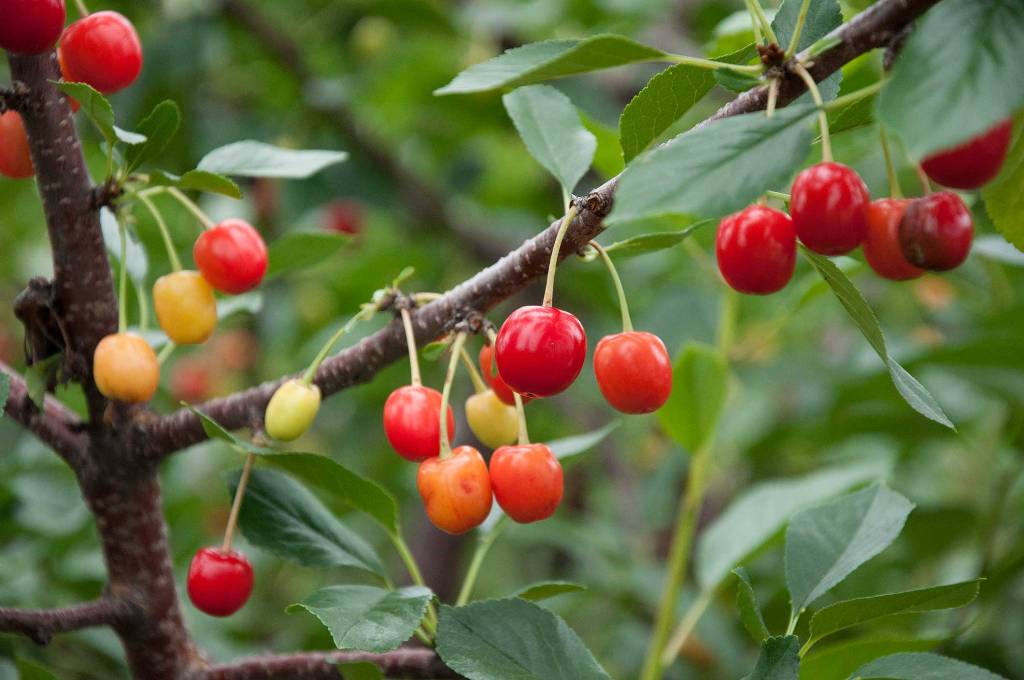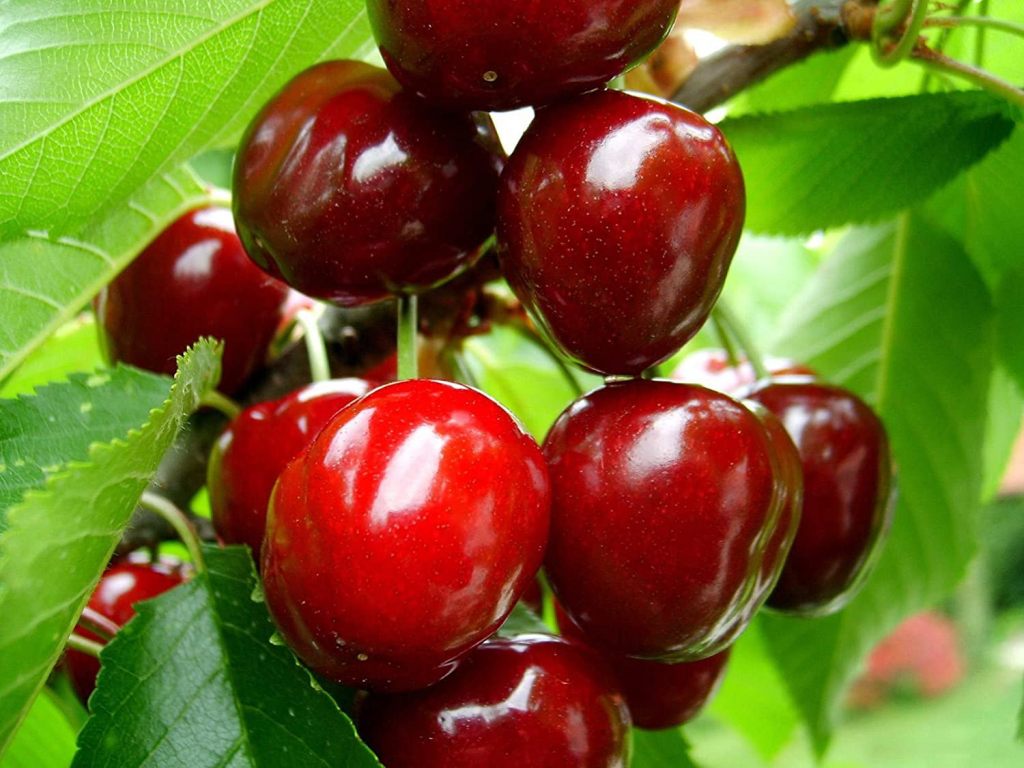How to Grow and Care for Cherry Fruit Tree

Cherry is a beautiful looking fruit that comes in colors ranging from bright to blood red. Everybody loves it because of its sweet taste in such a small serving. It is also chosen as the main ingredient in several desserts, and a topping of cherry is widely cherished. The botanical name for Cherries is Prunus. The Cherries belong to the rose family, Rosaceae. Blackberries are native to the northern temperate regions. Growing Cherries of your own is not expensive or high maintenance. In fact, they only require very little care and proper conditions for it to thrive. They attract the eye during spring when they are covered with colorful blossoms that make the cherries look irresistible.
There are two types of Cherries available. They are Sweet Cherries and Sour Cherries. The sweet cherries often look like a plum, although they are smaller in size. The texture is very smooth. The sour Cherries, on the other hand, are not eaten raw. They are saved for cooking uses. Both types of Cherries require similar conditions.
Suitable Conditions

The sweet cherries, also named Prunus Avium, thrive in the USDA hardiness zones ranging from 5-7. The sour ones do best in zones ranging from 4-6. While planting, one should easily expect a wait for about 3-5 years to enjoy the fruits. The best place to plant Cherries is in a location providing low humidity and mild temperatures. Cherries grow best in areas having cooler temperatures. Cherries can be planted during spring or even during fall. The standard Cherries should be grown approximately 30-40 feet apart, whereas dwarf ones require lesser space, i.e., of 8-10 feet.
Light and Watering Preference
When it comes to providing proper light for the plant, the Cherries thrive best under the full sun as any fruiting plant would love it as much as Cherries. It is to be made sure that the plant gets plenty of direct sun throughout the day. Full sun of minimum 7-8 hours is a must for the cherries. The plant can tolerate some amount of shade. However, if the plant is provided too much shade, the plant will not be able to give out the expected amount of fruits. Suppose the Cherries are planted in dry areas, water the plant once a week is highly recommended. However, make sure that the soil is not soaked in water as dry roots are healthier when compared to soaked ones.
Soil and Feeding Requirements

Planting any fruit trees means that proper soil should be provided to ensure a delicious outcome. Cherries are a species that require deep and as well as properly drained soils. Make sure that the Cherries are not planted in areas having rocky soils or soils with highly clayey soils as they may hamper the growth. The sour Cherries prefer the soil with pH level ranging from 6-7, and sweet Cherries prefer pH of 6.3-7.2. However, they also grow in acidic soils but may not show their best growth. For feeding the Cherries, the fertilization will not be a tough task. This is because the Cherries are considered to be low feeders. They only require a very little amount of all-purpose fertilizer or nitrogen once a year. This should be done before the flowers start to bloom. The Cherries, twice a year, also prefer a light application of compost.
Problems Related to Cherries
Various pests love to make fruits their hosts and Cherries are no exception with their amazing taste. The Cherries are prone to attracting Aphids, caterpillars, Brown rot, Black Knot, Japanese Beetles, Birds, Bacterial Canker, Leafhoppers, bores, mites, or the fruit flies. One can get rid of the pests by using sprays. Another great alternative is Neem oil, which can, however, also affect the beneficiary insects. To get rid of the diseases, Horticulture oil is recommended.
Yes, container-grown cherries can grow in pots. It requires a pot that is deeper than the root ball of the tree. The recommended size is 57L pot for a tree that is 5 feet. There should be enough space for the roots to grow and proper holes for drainage.
Cherries themselves are perfectly safe. They even have various health benefits. However, eating them straight from trees is not recommended as some may also consume the stems or the leaves, which can be proved harmful as they may be toxic.
Cherry itself is not poisonous and contains various nutrients that can benefit the body. However, the pits and stems can prove to be poisonous. The pits can get stuck in the digestive tract, which may cause serious harm.





